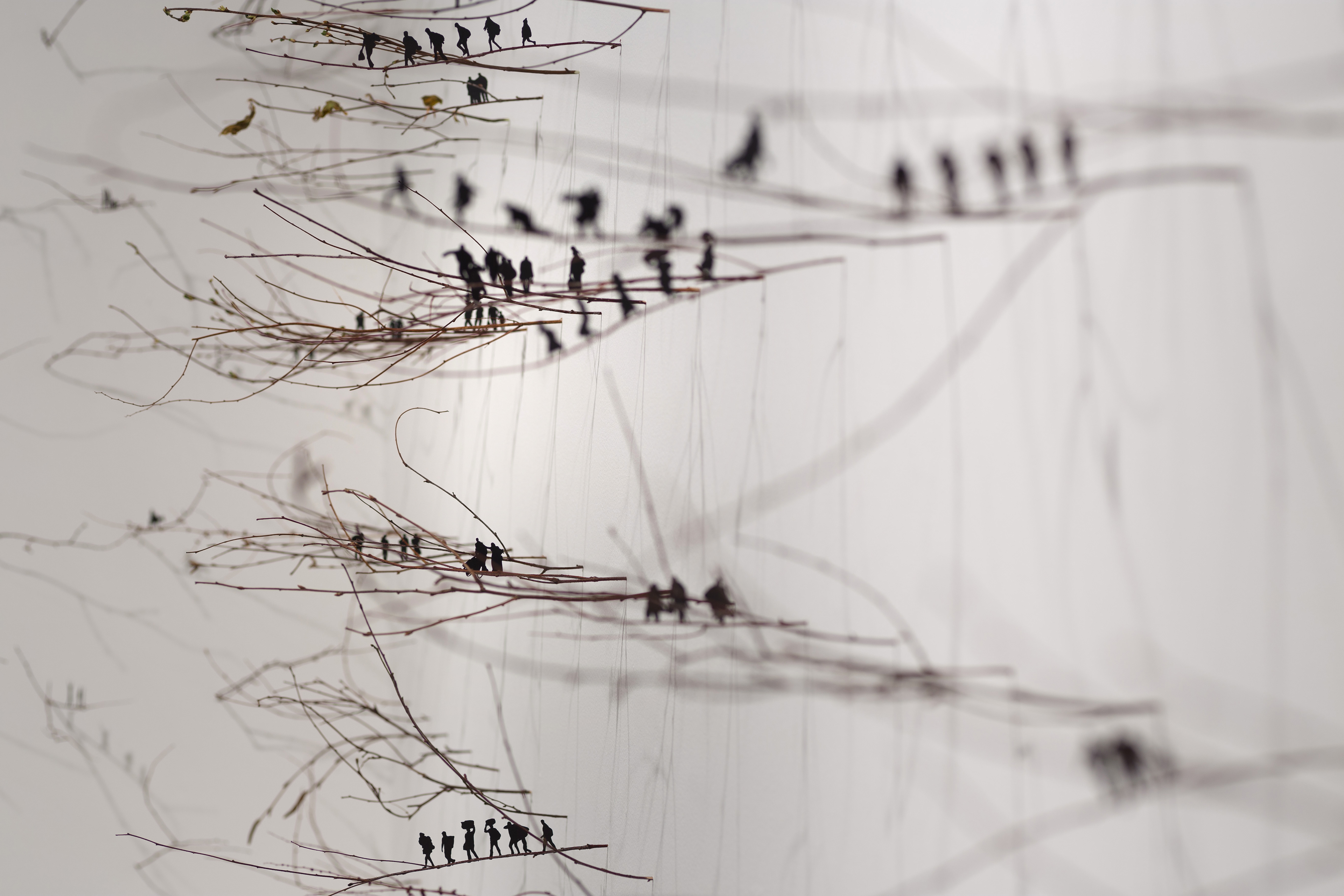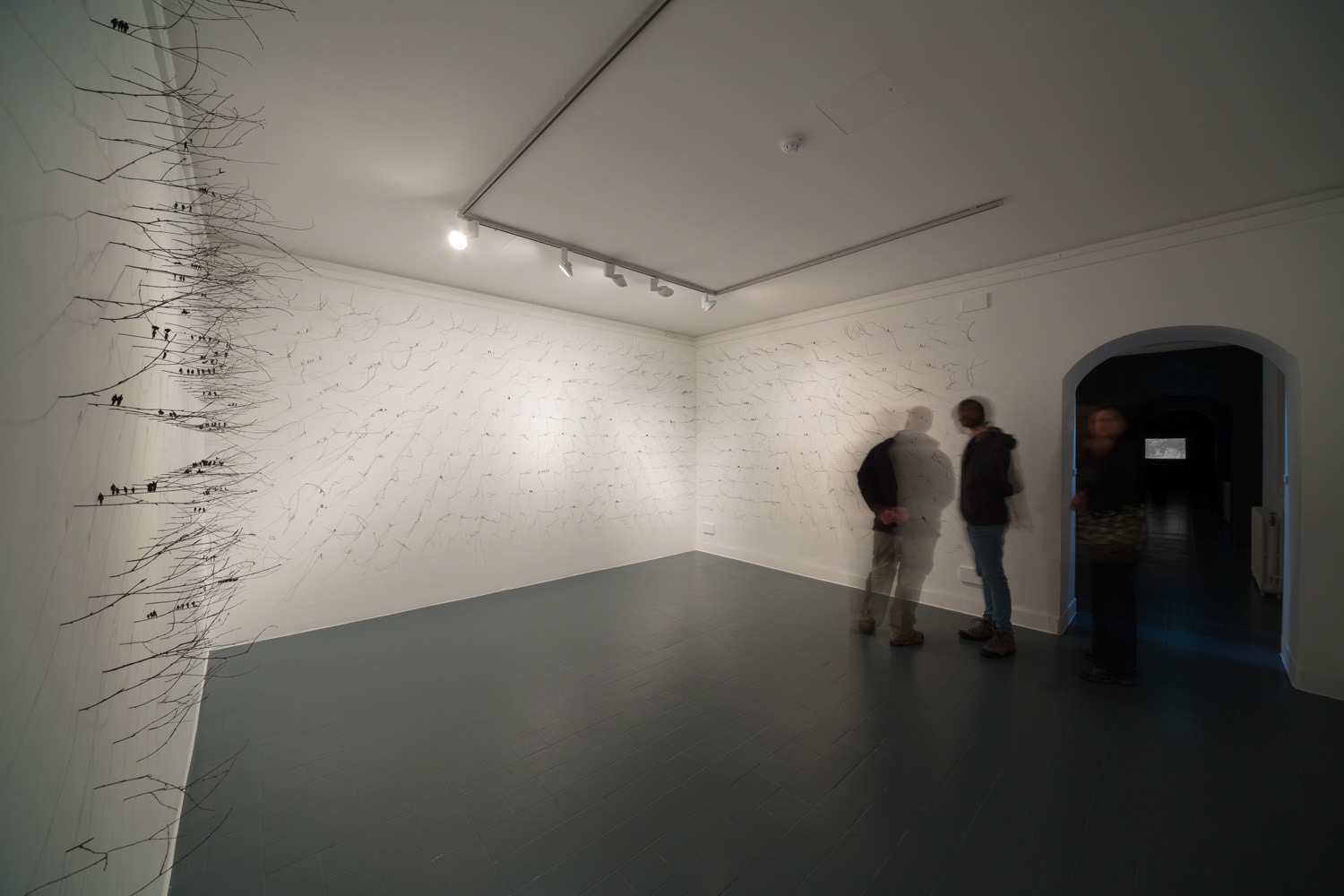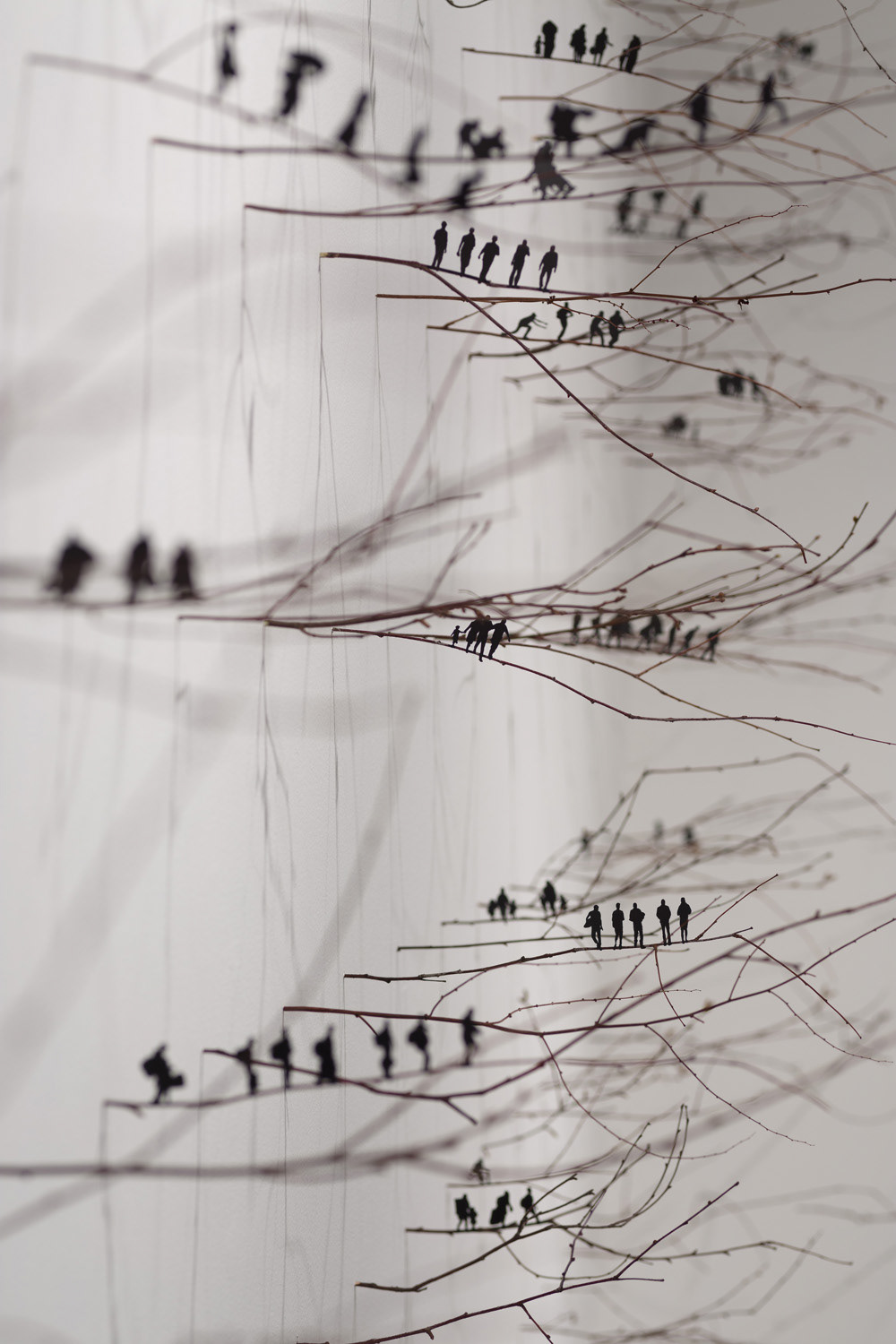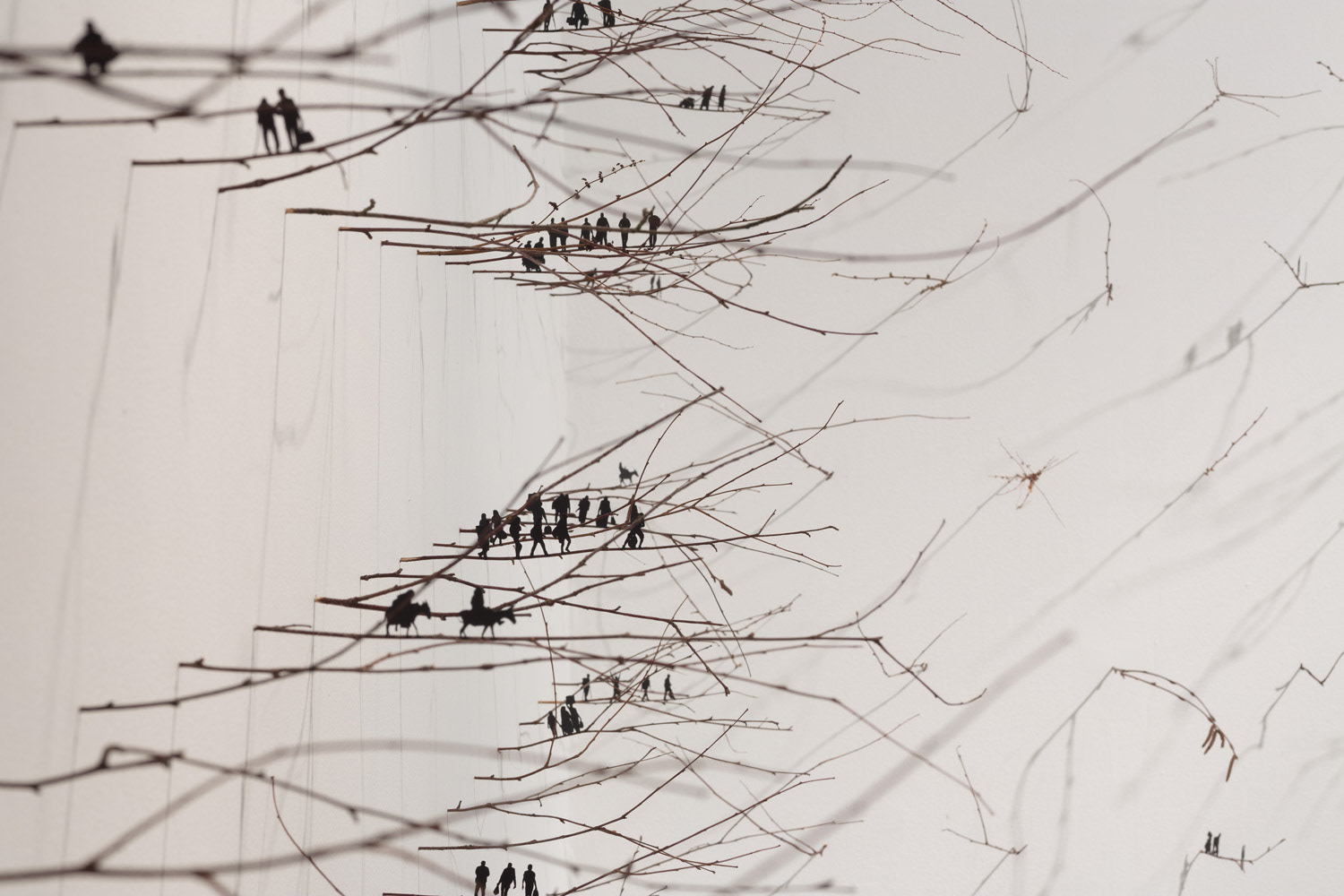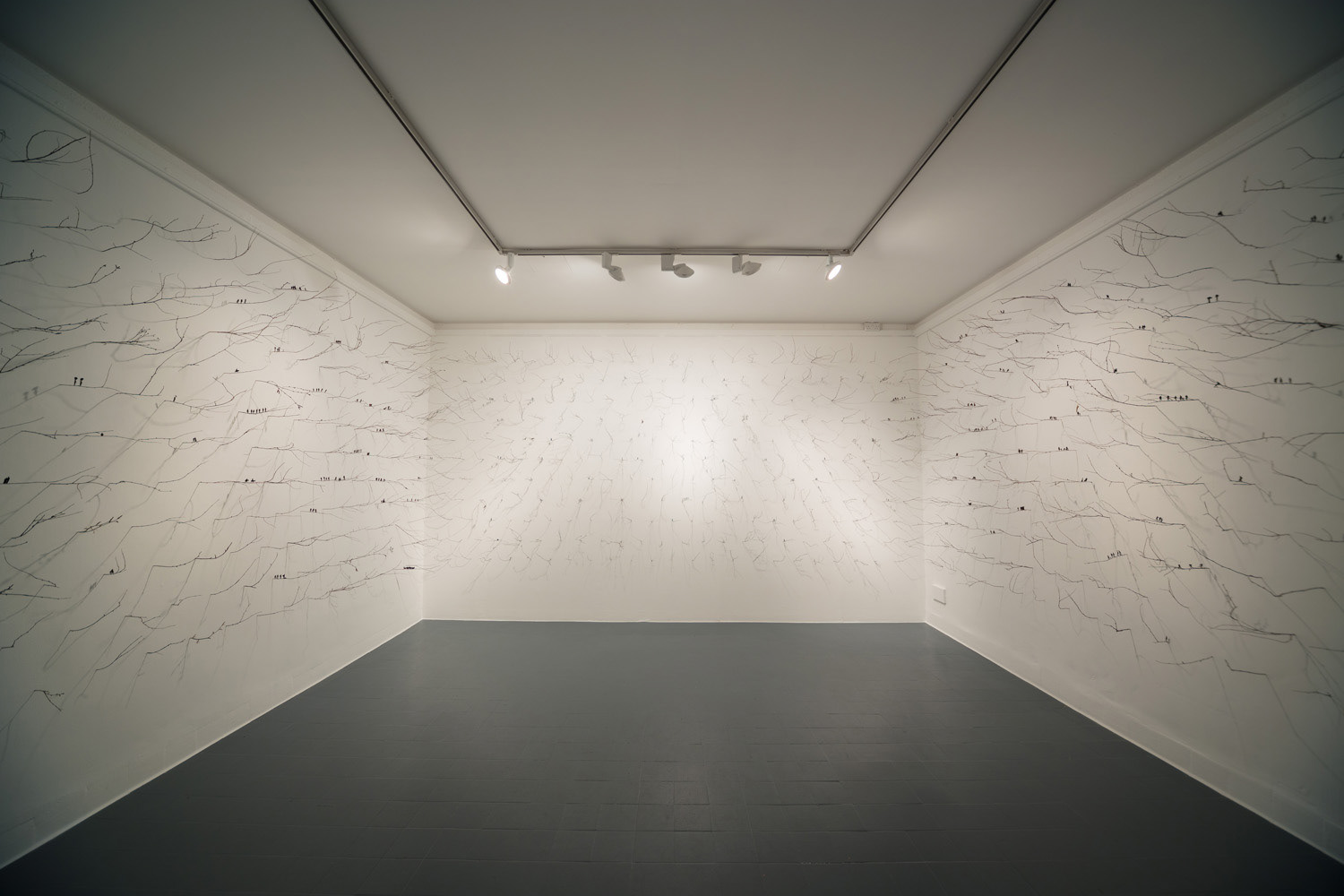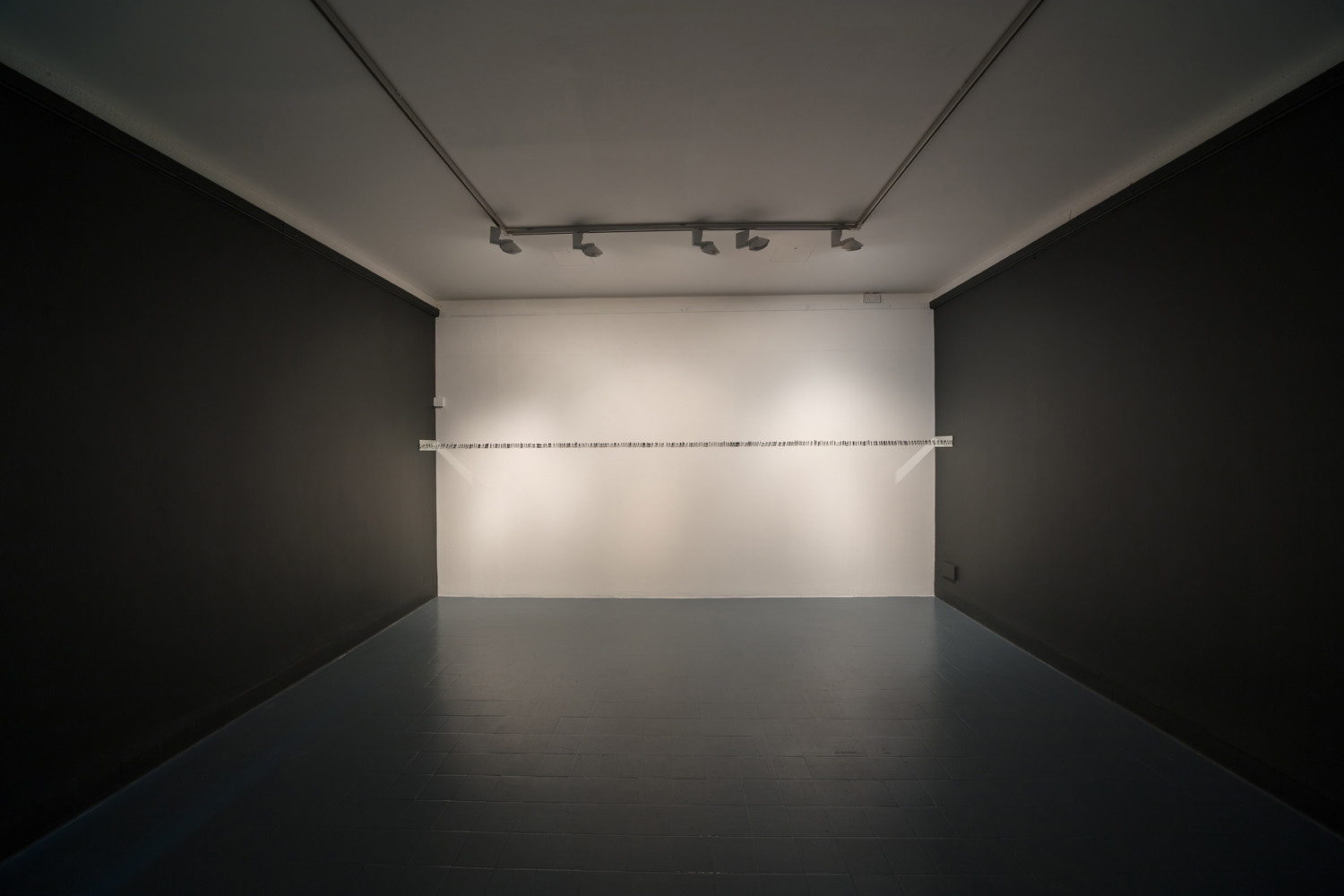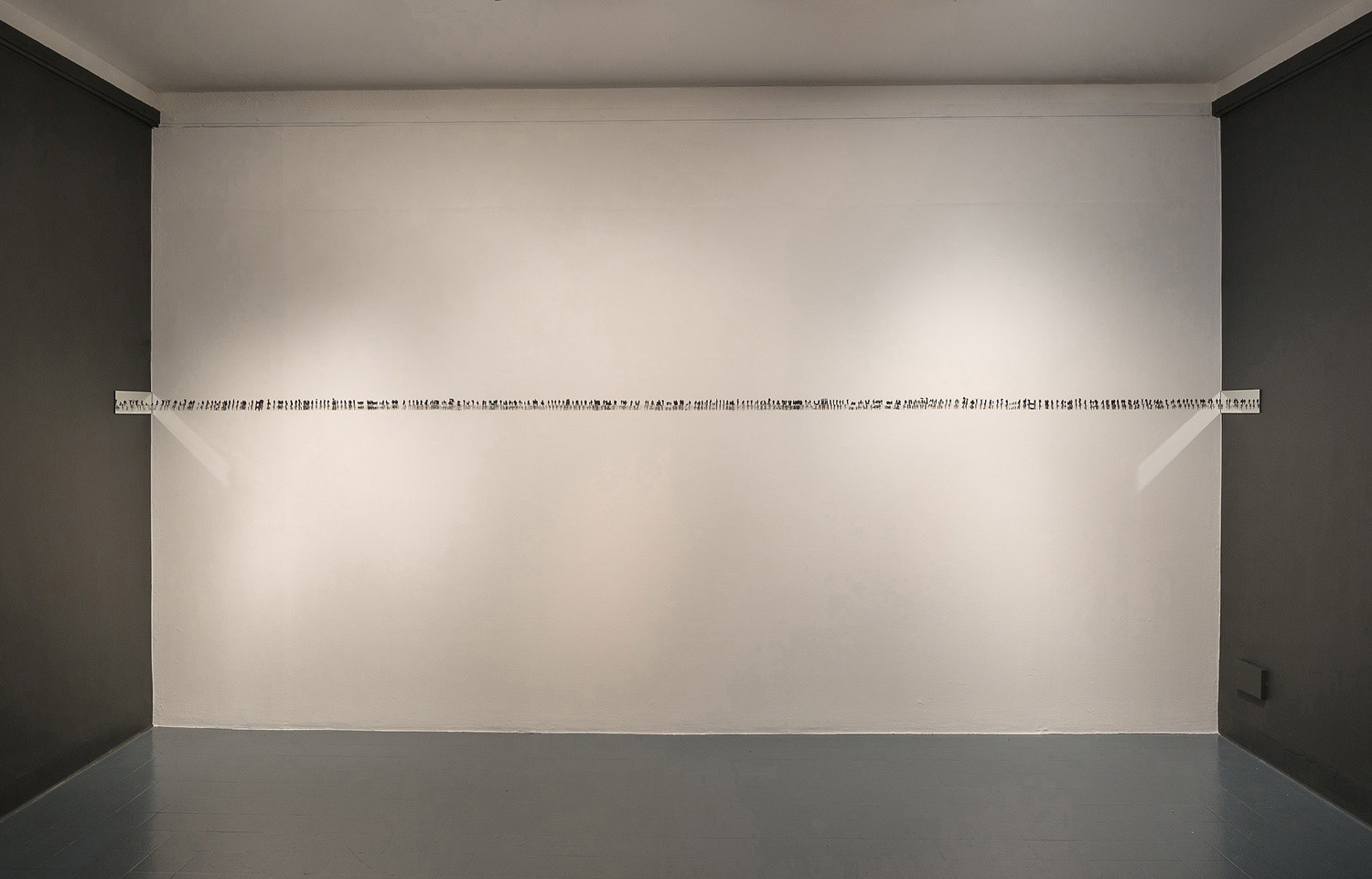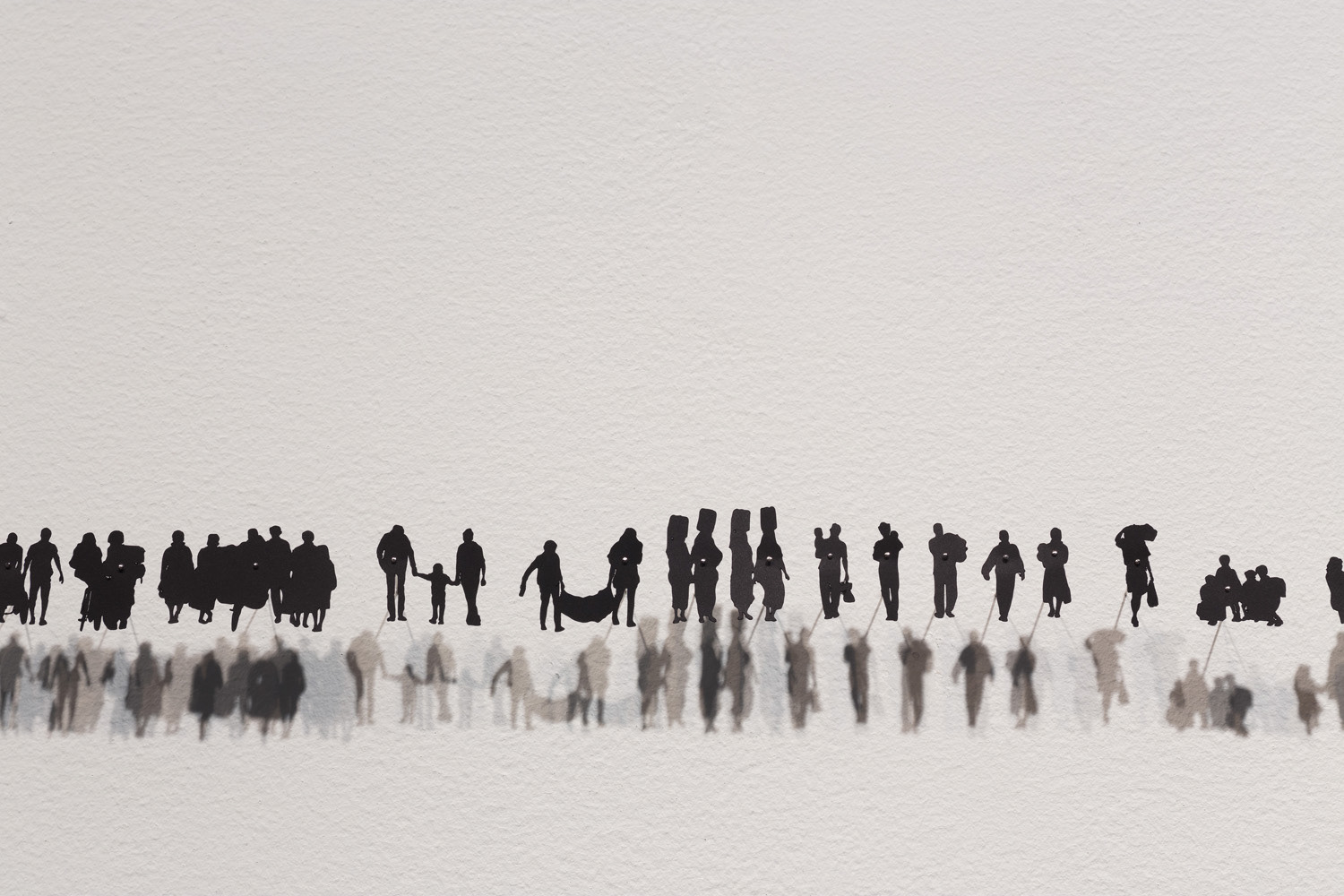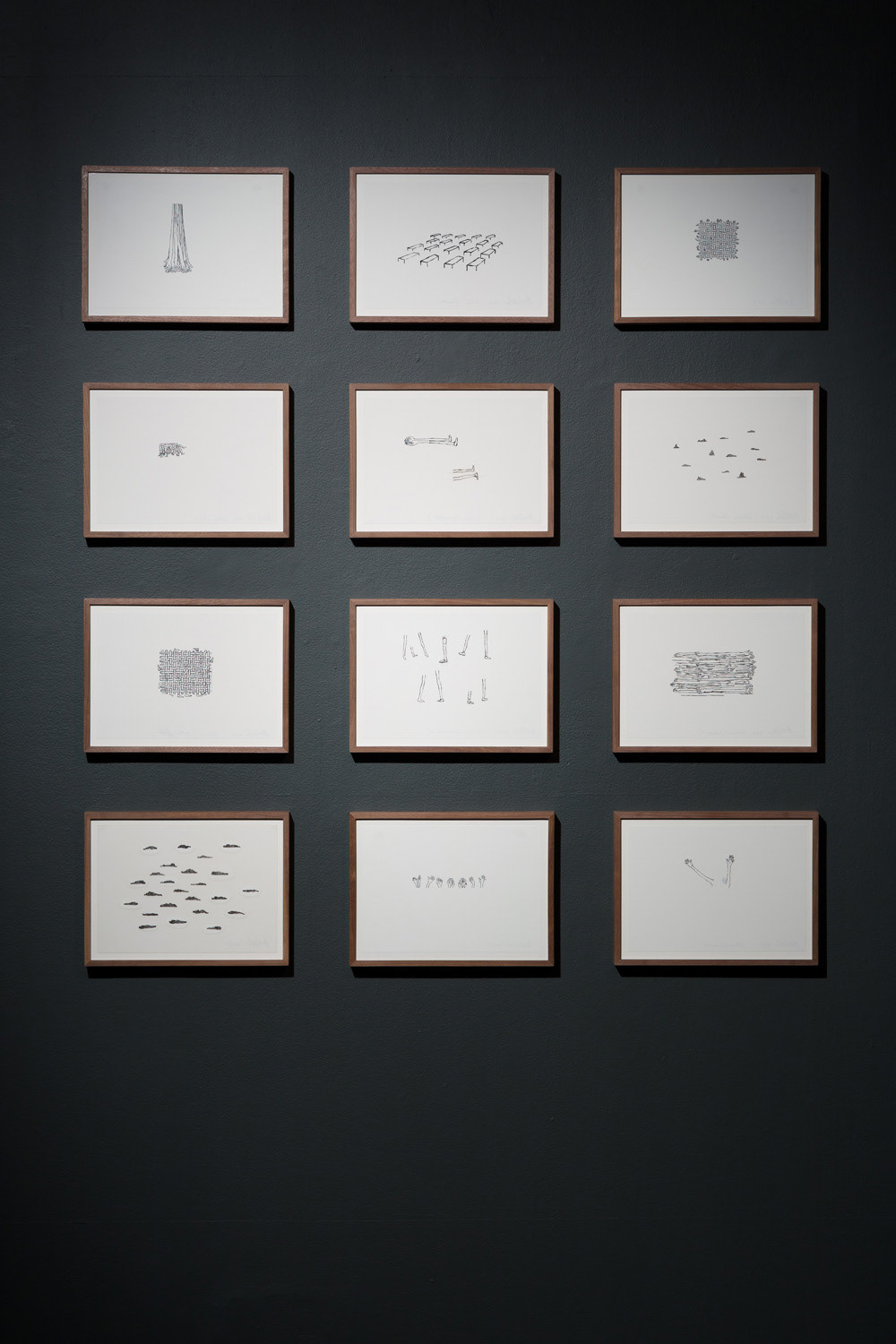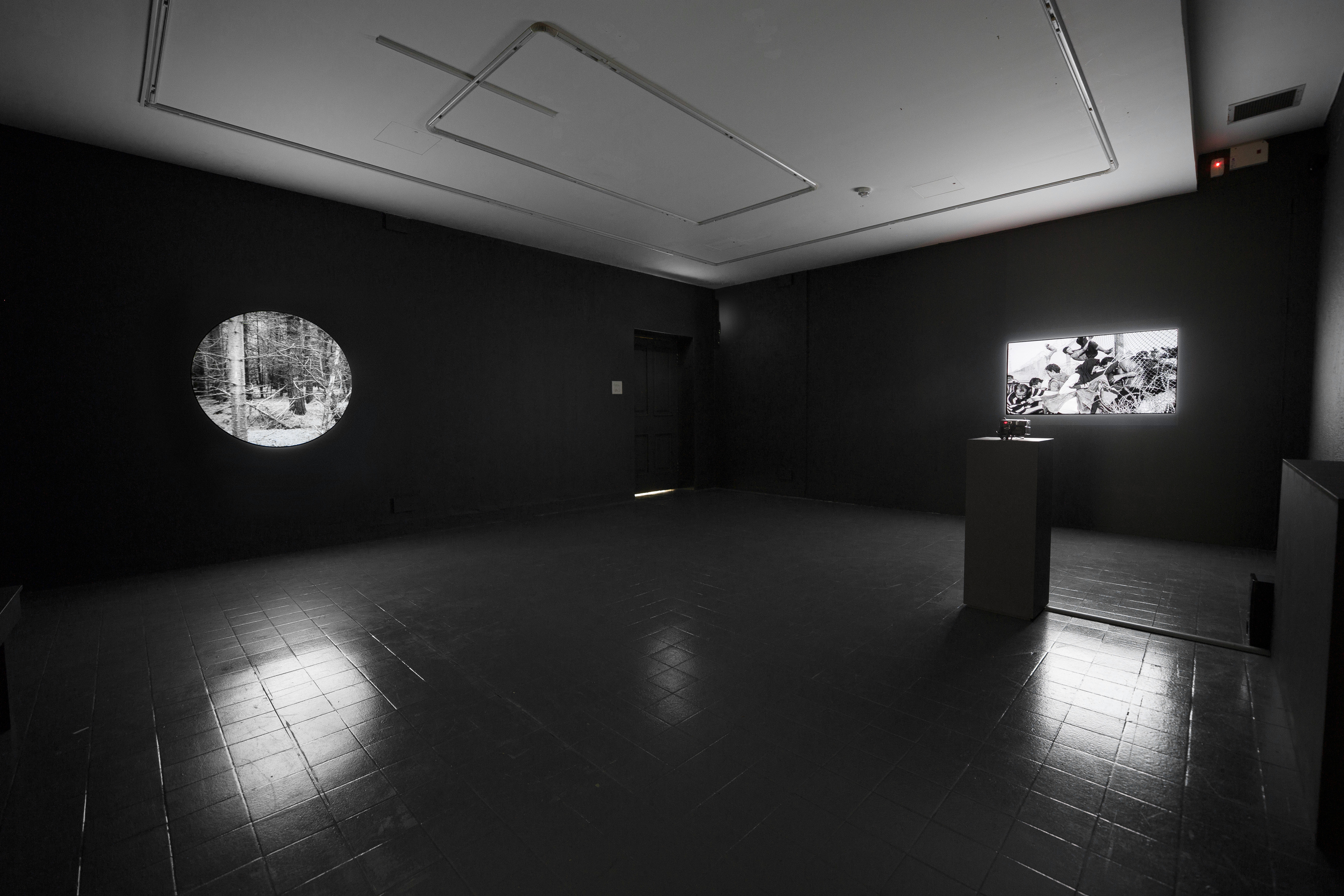CITIZEN | Butler Gallery, Kilkenny, Ireland, 2016 Photography by Roland Paschhoff
Anita Groener’s ongoing multimedia project, Citizen, addresses one of the most pressing issues of our time—the refugee crisis—and our response to it.
Orchestrating site-specific installations, video projections, and drawings, the Irish artist draws attention and compassion to the plight of displaced people. Focusing on specific current events and their archetypal and psychological resonances, Groener traces urgent connections between the experience of refugees driven from their homes by armed, economic, or political conflict and her own life and family.
Two immersive site-specific installations feature scores of tiny black, meticulously cut-out silhouettes of refugees. In Citizen, the people move frieze-like along countless twigs planted in the wall in a grid to form an enveloping minimalist forest. In Witness, we see the silhouettes head-on in a row on one wall that expands endlessly in mirrors at either side. Each of Groener’s silhouettes is unique, based on a specific individual in one of the thousands of photographs of displaced people she compiled during her research; as a host of figures, they become universal and timeless symbols that suggest the enduring magnitude of the phenomenon.
Groener’s work counters what she sees as an emerging collective alienation by encouraging the viewer to walk in the footsteps of a multitude of anonymous people on the move, without a country and without a home. It incites an imaginative journey between present and past, between here—the geographical, social, and cultural locations of the spectator—and there—the site of the represented trauma. The deliberately modest means of Groener’s installations and line drawings—twigs, cut paper, straight pins, gouache—speak to the fragility of life and society that refugee crises expose. Her art implicates herself and us, asking questions about the ethics of witnessing and aesthetic response.
Ever since World War I, refugees have walked the interstices of the European state system. The current Syrian refugee crisis continues this predicament. A massive human dislocation is the largest exodus of people from one country since World War II. In 1951, the political theorist Hannah Arendt called refugees “the most symptomatic group in contemporary politics.” The German writer Heinrich Böll observed that the twentieth century was “the century of prisoners and refugees.” Dispersed by persecution or manmade catastrophes such as war or civil unrest, people still seek sanctuary, yet, in the end, most really want to return home.
Joseph R. Wolin, 2017
